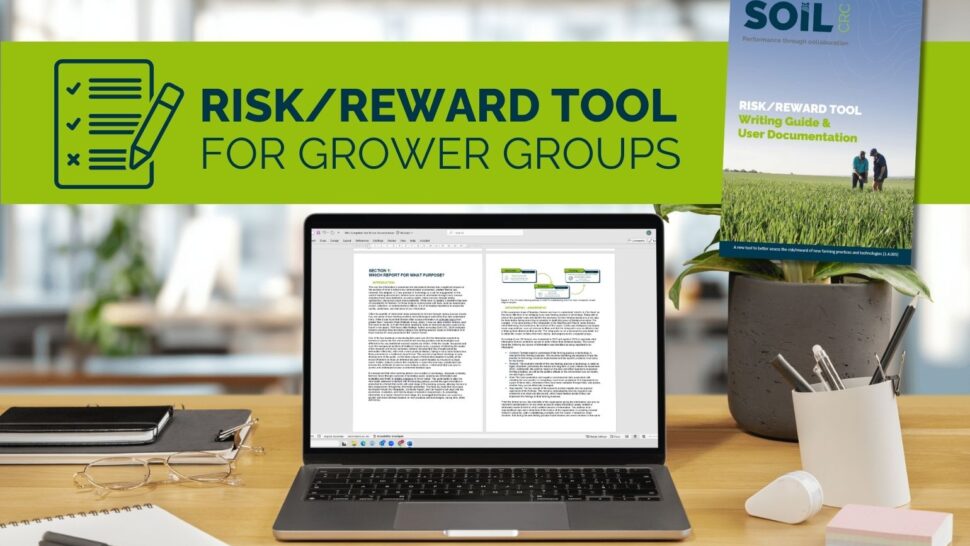A new reporting tool created by Soil CRC researchers will help grower groups assess and communicate the risks and benefits of new farming technologies and practices.
Project leader and CEO of West Midlands Group, Dr Nathan Craig, said grower groups have traditionally communicated research results in a scientific-style report document, which may not be the most accessible format for many farmers.
“The Soil CRC’s new ‘Risk/Reward Reporting Guide’ will assist grower groups and extension agencies to better synthesise and disseminate research outputs to farmers, helping to simplify the decision-making process,” he said.
“It will also enable research outputs to be shared in a standardised way that allows for better evaluation and balance between the short- and long-term soil health benefits and improved farm profitability.”
User input and testing has been key to ensuring the Risk/Reward Reporting Guide will become an asset for grower groups, ultimately benefiting farmers and the broader agricultural industry.
Dr Craig said the project team surveyed farmers to learn more about their perceptions of risk and reward in decision-making.
“We then cross-referenced this feedback with grower group experience to define the most important considerations for farmers when deciding whether to adopt a new farming practice.”
This knowledge informed the development of a draft Risk/Reward Reporting Guide, which has since been refined through further user testing to ensure it effectively addresses both grower group and farmer needs and challenges.
“User feedback confirmed that the reporting format currently used by the industry lacks a robust financial analysis component”, Dr Craig explained.
“The Risk/Reward Reporting Guide has addressed this by incorporating a section on the production of detailed economic analyses in technical reports, enabling farmers to make informed decisions about investments and financial implications.”
Grower group feedback also indicated that there is significant variability in how innovation is presented to farmers for consideration of adoption.
The final Risk/Reward Reporting Guide has evolved into a suite of tools, including a writing guide and full report template, synthesis report template, and an infographic template.
“These tools are designed to help grower groups produce tailored, farmer-centred extension material to communicate trial and project results,” Dr Craig said.
Grower group case studies have also been developed to highlight the dynamic use of the reporting tools in a range of use-case scenarios, along with user documentation.
Corrigin Farm Improvement Group is part of the project team and has successfully incorporated the Risk/Reward Reporting Guide into the organisation’s extension activities.
“The project and the development of the infographic tool has been very beneficial to bolster our communication and extension options,” said Corrigin Farm Improvement Group Executive Officer, Joy Valle.
“We can use it for any project to succinctly and clearly extend project outcomes. Being developed with the input from farmers ensures we are able to deliver information in a way that works for them.”
Soil CRC CEO Dr Michael Crawford said the applicability of the Risk/Reward Reporting Guide extends to other research areas, beyond soils and the Soil CRC.
“I encourage all Australian grower groups to consider how this new guide can assist their extension efforts and improve the accessibility of information provided to farmers to support their decision-making,” Dr Crawford said.
“It is also an example of the broad scope of research of the Soil CRC. It is not just about the biophysical research, but also about the social research and how we can remove barriers to adoption, especially in relation to soil health and productivity.”
The Risk/Reward Tool will be available on the Soil CRC website in the coming months.

